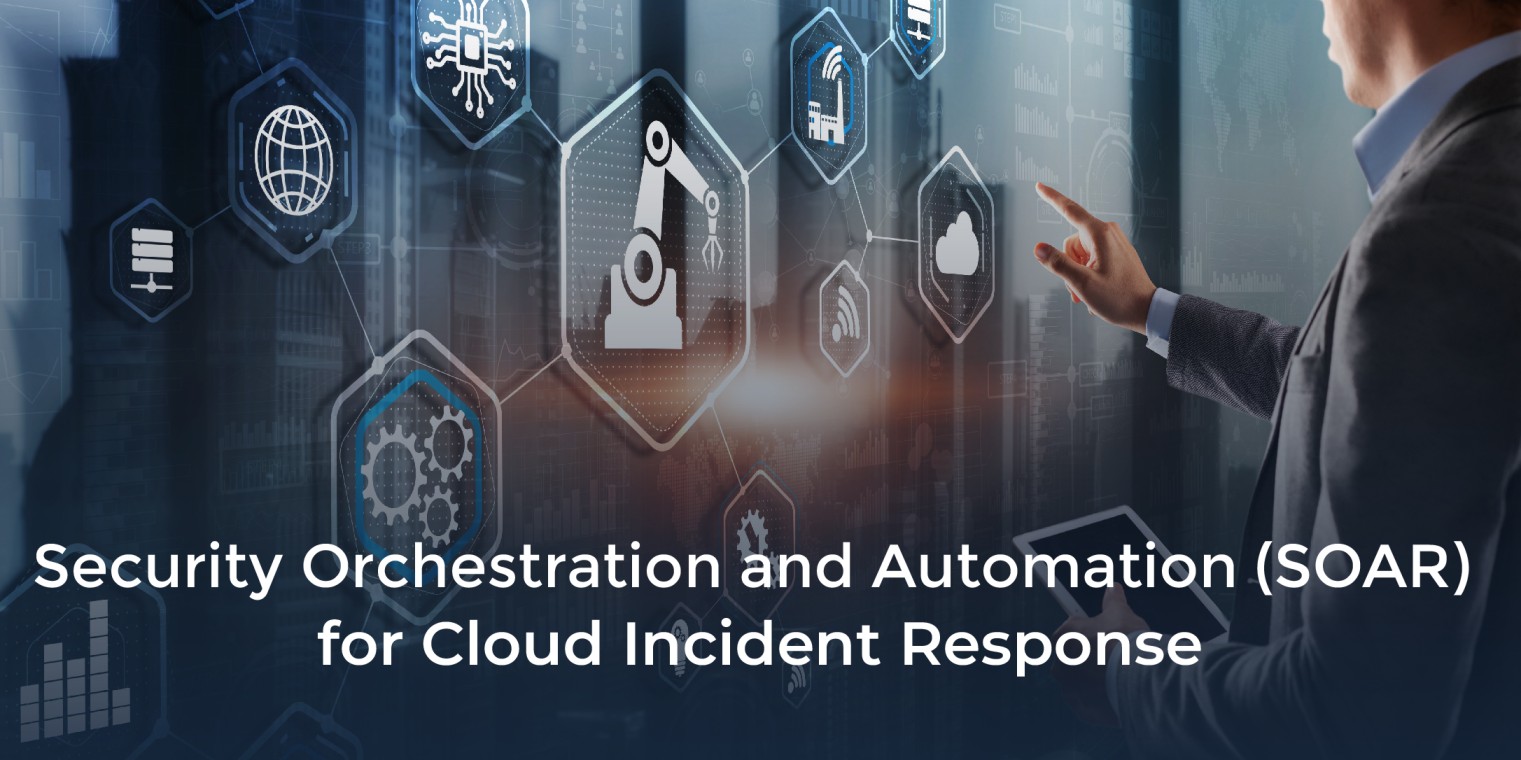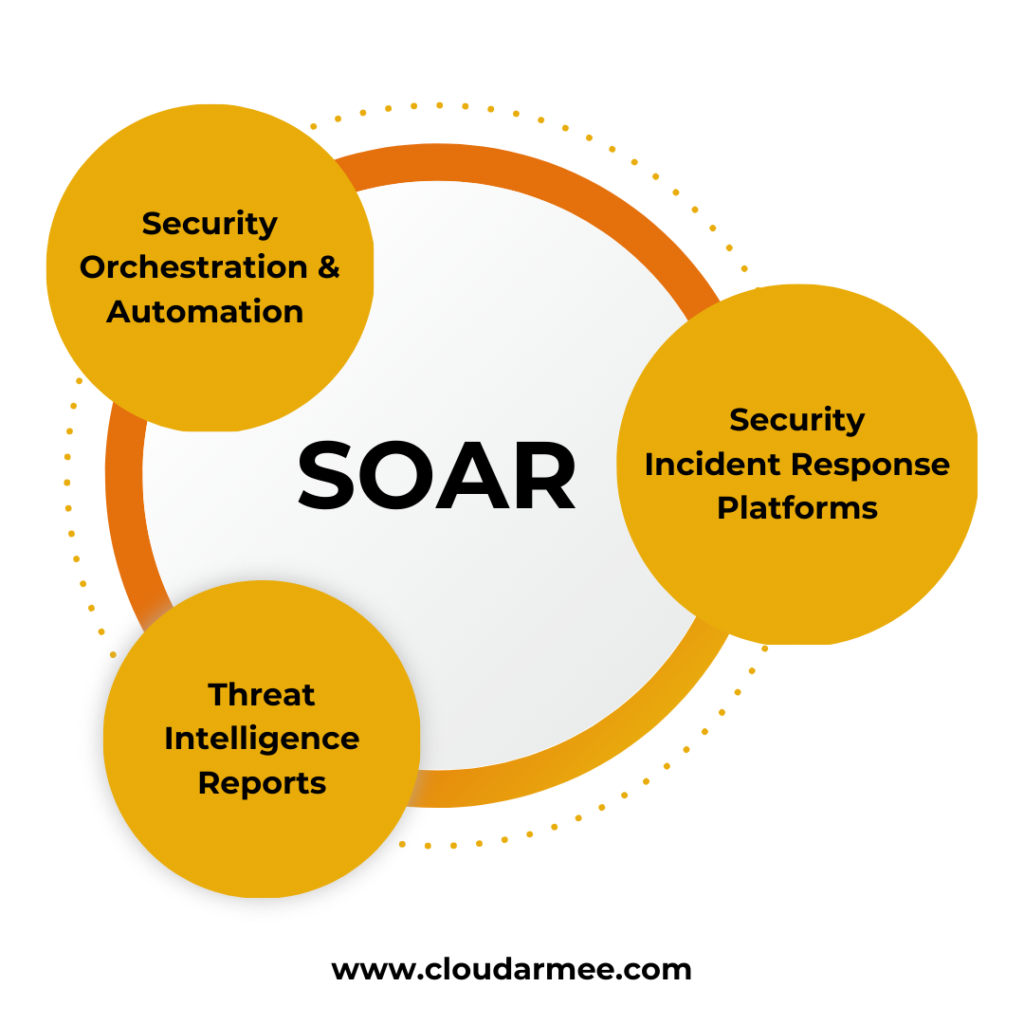
85% of the organization consider security as a top challenge on cloud. Security orchestration, automation, and response (SOAR) constitute a suite of compatible software applications empowering organizations to effortlessly collect information on security threats and address security events with minimal human intervention. The primary objective of utilizing a SOAR platform is to enhance the efficiency of both physical and digital security operations.
SOAR platforms consist of three core components: security orchestration, security automation, and security response.

Security response provides analysts with a unified view encompassing the planning, managing, monitoring, and reporting of actions executed after a threat is identified. This consolidated view facilitates collaboration and sharing of threat intelligence across security, network, and systems teams.
SOAR platforms, with advanced capabilities, empower SOC teams to sift through vast data effortlessly. Ingesting threat intelligence in real-time, these platforms connect the dots, providing incident response teams with actionable, contextual intelligence to expedite incident resolution and enhance cloud security orchestration.
Automation integrated into SOAR playbooks relieves security teams of tedious tasks. Security orchestration collects data, automation manages low-priority alerts, and incident response simplifies event handling, reducing attack dwell time and overall impact.
SOAR tools significantly reduce Mean Time to Detect (MTTD) by providing contextualized incident reports. Simultaneously, security automation lowers Mean Time to Respond (MTTR) by swiftly addressing alerts and incidents in real-time, enhancing overall incident response.
The combination of security orchestration’s wide-ranging alert collection and security automation’s swift, human-free response accelerates the alert handling and incident response process.
Modern SOAR platforms seamlessly integrate with various security tools, simplifying threat or incident response through efficient collaboration among different security technologies.
Integrating SOAR into the cloud security framework results in significant cost savings across reporting, playbook creation, alert handling, and analyst training.
SOAR platforms automate incident metric reporting, saving time and providing organizations with regular, simplified metrics for streamlined incident processes.
Advanced SOAR platforms, powered by cyber fusion technology, facilitate collaboration among diverse internal security teams. This cohesive approach ensures an effective cyber incident response by bringing together SOC, threat hunting, vulnerability management, and threat intelligence teams.
Employing SOAR solutions aids in diminishing the risk of malware infection. This involves meticulous tracking and monitoring of all malware-related activities, implementing mitigation and containment measures, and analyzing key detection parameters for indicators of compromise (IOCs) and threat actor tactics, techniques, and procedures (TTPs).
SOAR facilitates a comprehensive 360-degree response by assisting in incident triage, investigation, and actioning within an automated response workflow. Enabled by cyber fusion collaboration among internal security teams, this approach ultimately reduces false alarms and analyst fatigue through streamlined post-detection and incident triage methods driven by data enhancement, correlation, and enrichment processes.
SOAR tools simplify vulnerability monitoring by establishing a unified database. This allows for the tracking, mitigation, and correlation of threat actors, malware, incidents, and assets to proactively neutralize further exploitation.
Security teams can efficiently manage multiple incidents/threats from a single dashboard using SOAR tools. They can ingest threat intelligence, streamline workflow automation, and handle complex threat campaigns to reduce false alarms, noise, and overall mean time to respond (MTTR). Additionally, security teams can utilize a vast library of out-of-the-box SOAR playbooks, customizing them to automate responses to sophisticated attacks.
What are Playbooks?
Playbooks are integral to SOAR success, offering predefined automated actions that can be prebuilt or customized. Multiple interconnected playbooks enable the completion of complex actions. For example, if a malicious URL is detected in an employee’s email during a scan, a playbook can be activated to block the email, alert the employee about the potential phishing attempt, and blocklist the IP address of the sender.
SOAR solutions streamline incident response, minimizing the need for human involvement, enabling security teams to allocate resources to vital business operations. Automated SOAR incident response ensures business continuity and swift recovery post-incidents.
At CloudArmee we take time to clearly understand the gaps existing in your current workflows. Our SOAR capabilities include robust and fully automated incident management, fostering collaborative and timely responses from security teams. As an AWS WAR partner, we focus on not just security, but aspects like cost transparency, control, forecasting, and optimization.